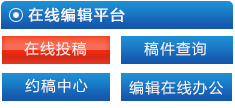检验医学
性激素6项对围绝经期妇女血脂4项水平的影响
曹文
【摘要】 目的 评价性激素6项对围绝经期妇女血脂4项水平的影响,了解围绝经期妇女性激素水平、血脂水平关系,以早期预警动脉粥样硬化、冠心病、高血压等血脂异常疾病,确保女性生命安全、健康状况。方法 选择我院2019年1~6月收治的围绝经期妇女,从45~55岁、56~65岁围绝经期妇女中各选择120例作为观察1组与观察2组。另外,选择同期25~44岁健康体检女性120名作为对照组。
【关键字】 围绝经期,性激素6项,血脂4项,筛查
中图分类号:文献标识码:文章编号:
[Abstract] Objective To evaluate the effects of the six sex hormones on the four levels of blood lipids in perimenopausal women, and to understand the relationship between sex hormone levels and blood lipid levels in perimenopausal women, so as to early warn atherosclerosis, coronary heart disease, hypertension and other dyslipidemia diseases, to ensure the safety and health of women. Methods The perimenopausal women who were admitted to our hospital from January to June 2019 were selected, 120 perimenopausal women aged 45-55 and 56-65 were selected as observation group 1 and observation group 2. In addition, 120 healthy women aged 25-44 in the same period were selected as the control group. Three groups of female subjects participated in the informed participation and were reviewed and approved by the ethics committee. All six sex hormones [follicle-stimulating hormone (FSH), luteinizing hormone (LH), estradiol (E2), prolactin (PRL), and testosterone (T), progesterone (P)], four blood lipids [serum total cholesterol (TC), triglyceride (TG), high density lipoprotein (HDL), low density lipoprotein,(LDL)] level testing, patients with informed consent to participate, and compare the levels of various indicators in the three groups.
围绝经期女性的身体状况明显有别于其他阶段,患者月经以及泌尿生殖道等发生变化。在临床工作中发现,当前围绝经期患者的年龄开始呈现明显的年轻化态势。分析此情况发生的原因,可能与人们生活压力以及工作压力的增大、生活节奏加快等因素有关[1-2]。另外,我国社会人口老龄化趋势明显加重,导致老年围绝经期妇女增多表现[3]。围绝经期妇女多发性激素水平异常情况明显,其中,卵泡刺激素(follicle-stimulating hormone,FSH)、促黄体素(luteinizing hormone,LH)、雌二醇(E2)、泌乳素(prolactin,PRL)降低明显,睾酮(testosterone,T)、孕酮(Progesterone,P)升高明显,性激素水平波动情况下增加了代谢异常、血脂异常发生风险,进而增加了罹患心血管、肥胖等疾病的风险,故需积极预警干预[4-5]。基于此,本文就我院收治的围绝经期妇女以及健康体检女性为例,研究围绝经期妇女性激素、血脂水平关系。
1 资料与方法
1.1一般资料 研究对象均为女性,时间选自2019年1~6月,从中选择45~55岁、56~65岁围绝经期妇女以及25~44岁健康体检女性各120例作为观察1组、观察2组、对照组。纳入标准:①获得伦理委员会批准。②参与女性知情同意,理解、配合能力正常。③病历资料完整。排除标准:①凝血功能障碍患者。②重要脏器功能不全患者。③生殖系统疾病患者。④自身免疫性疾病患者。⑤应用影响检测结果准确性药物患者。观察1组:患者年龄45~55岁,平均年龄(50.03±3.50)岁;平均舒张压为(83.50±6.50)mm Hg,平均收缩压为(125.05±8.50)mm Hg;平均BMI指数为(24.30±1.50)kg/m2。观察2组:患者年龄56~65岁,平均年龄(60.05±3.20)岁;平均舒张压为(86.80±6.80)mm Hg,收缩压为(130.05±8.50)mm Hg;平均BMI指数为(25.60±1.30)kg/m2。对照组:患者年龄25~44岁,平均年龄(30.05±3.20)岁;平均舒张压为(76.05±7.50)mm Hg,收缩压为(118.80±9.50)mm Hg;平均BMI指数为(22.30±1.30)kg/m2。3组受试女性年龄、BMI指数、血压差异有统计学意义,P<0.05。所有调查对象的临床资料递交伦理委员会审核并获得批准。










